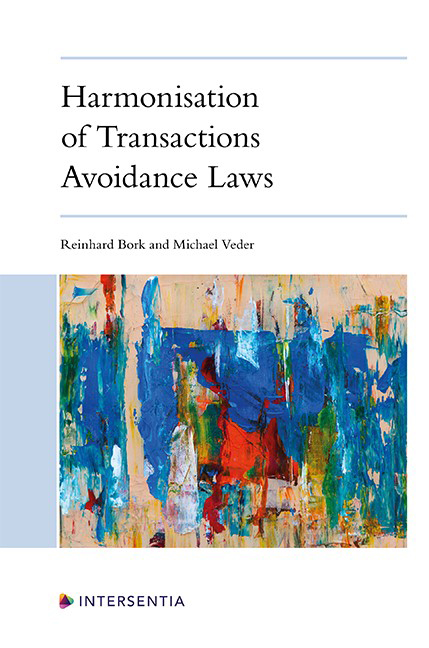Austria
Published online by Cambridge University Press: 26 May 2022
Summary
PART 1. DETAILS OF YOUR NATIONAL TRANSACTIONS AVOIDANCE LAW
I. SYSTEM
Question 1. Is your transactions avoidance law (for terminology cf. Introduction at C.) part of insolvency law or is it in parts or as a whole incorporated in other fields of law (e.g. general civil law, commercial law, company law)?
Austrian transaction avoidance law is generally incorporated in insolvency law, more precisely in part one, chapter two of the Austrian Insolvency Act (BGBl. I No. 29/2010, see §§27 to 43 Insolvenzordnung (hereinafter “IO”)).
In addition, the Austrian Business Reorganisation Act of 1997 (BGBl. I No. 114/1997 Unternehmensreorganisationsgesetzt, hereinafter “URG”) should be mentioned here. §18 URG deals with the calculation of the suspect period in case (pre-insolvency) reorganisation proceedings according to the URG precede the opening of insolvency proceedings. §20 URG addresses the avoidance of measures taken to continue the ordinary course of business during reorganisation proceedings and of reorganisation measures. However, in practice the URG does not play a significant role.
Question 2. Are the rules on transactions avoidance law in your jurisdiction the same for entrepreneurs/legal entities and consumers/natural persons? If not, please explain the differences and take it into account when completing this questionnaire.
Yes, in principle, the rules on transactions avoidance law are the same for all debtors. However, in so-called “debt settlement proceedings”(“Schuldenregulierungsverfahren”), i.e. insolvency proceedings for natural persons not operating a business (see §181 IO), §189 IO provides that any insolvency creditor is entitled to avoidance of transactions according to §§27 to 43 IO. The legislator had to adopt such a rule because debt settlement proceedings are generally debtor-in-possession-proceedings (see §186 IO).
Question 3. Are the rules on transactions avoidance law in your jurisdiction the same for liquidation and restructuring proceedings (if any)? If not, please explain the differences and take it into account when completing this questionnaire.
Yes, in Austria both liquidation and restructuring proceedings (also referred to as “reorganisation proceedings”, in German: “Sanierungsverfahren”) are governed by the Insolvency Act. Therefore, the same rules on transaction avoidance apply. For debtor-in-possession proceedings special rules clarify who is entitled to ask for the avoidance of legal acts according to §§27 to 43 IO (see Question 4).
- Type
- Chapter
- Information
- Harmonisation of Transactions Avoidance Laws , pp. 529 - 568Publisher: IntersentiaPrint publication year: 2022



